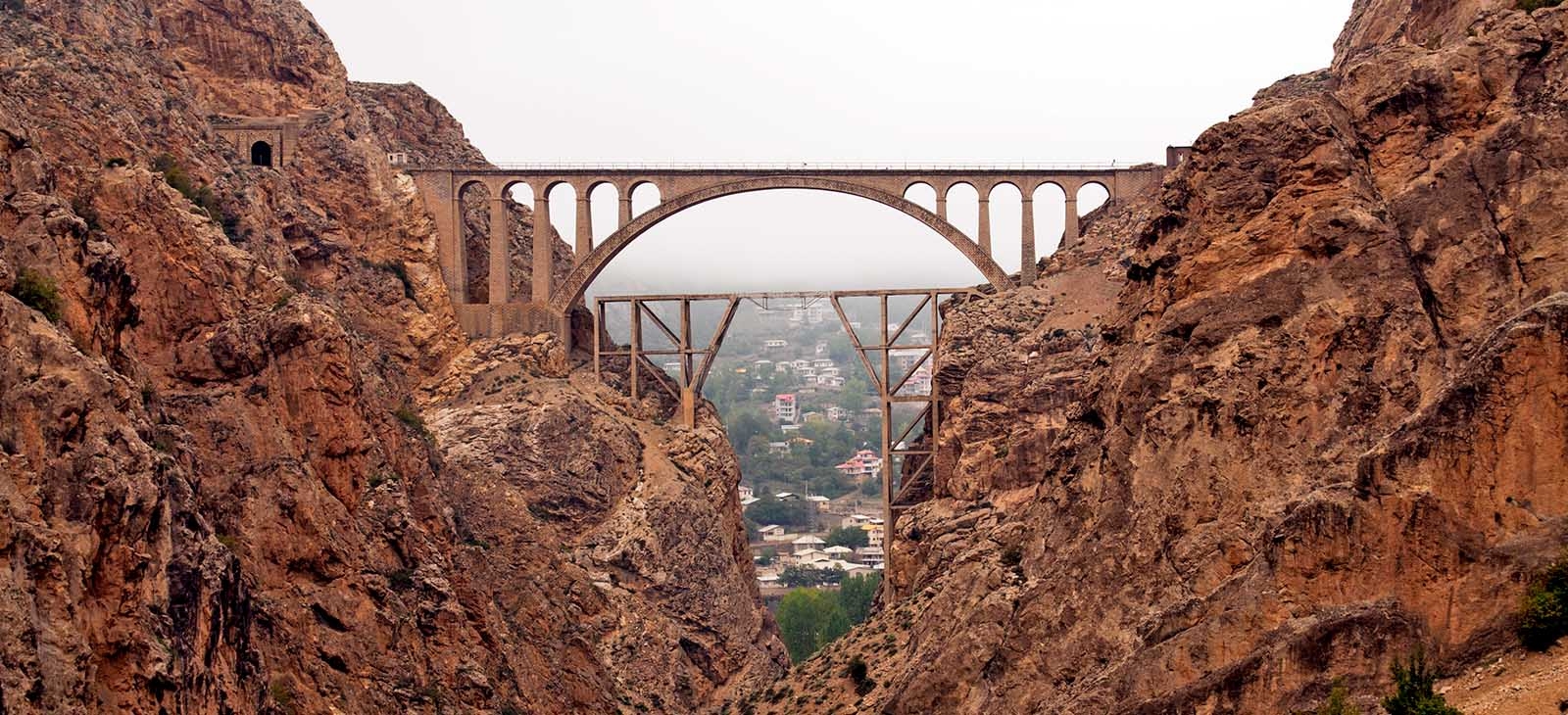The Veresk bridge (Varisk) is a bridge in Iran. The bridge was constructed mostly by Germans before World War II by leadership of an Austrian engineer namedWalter Inger, constructed during the reign of Reza Shah. It is located in the Veresk district of Savadkuh County, in Mazandaran province. During World War II, it was known as the Pol-e Piroozi ("The bridge of victory"). The bridge stands at 110 m (360 ft) tall and its arch measures 66 m (217 ft) long. The bridge serves the Trans-Iranian Railway network in Northern Iran.
The Veresk bridge (Varisk) is a bridge in Iran. The bridge was constructed mostly by Germans before World War II by leadership of an Austrian engineer namedWalter Inger, constructed during the reign of Reza Shah. It is located in the Veresk district of Savadkuh County, in Mazandaran province. During World War II, it was known as the Pol-e Piroozi ("The bridge of victory"). The bridge stands at 110 m (360 ft) tall and its arch measures 66 m (217 ft) long. The bridge serves the Trans-Iranian Railway network in Northern Iran.
The Veresk Bridge in Iran connects the railway between Tehran and the Caspian Sea region. It is located in Mazandaran’s Veresk district of Savad Kooh county, 85 kilometers south of Ghaemshahr and connects two of the mountains in the Abbas Abad region. The bridge is one of the masterpieces of the Danish engineering firmKampsax, (consisting of mostly German and Austrian engineers) serving the Trans-Iranian Railway network in Northern Iran. It has been said after finishing the bridge, people had a fear that the train wouldn’t be able to pass the narrow bridge and that it would break. As a result, the engineer and his family stood under it when the first train passed the bridge (local accounts claim that Reza Shah had asked them to do so anyway).
Underneath the bridge is a memorial structure built in memory of all the construction workers who lost their lives in the course of building the Veresk Bridge and its nearby tunnels. The Chief Engineer, Austrian Walter Inger, following his wishes, is buried in this location. Also under the bridge is an underground tunnel through which trains pass after crossing the bridge and gradually dropping altitude and before pulling into the train station. DuringWorld War II, it was known as the Pol-e-Piroozi, or the bridge of victory. During the course of the war, Reza Shah was asked by Hitler to blow up all tunnels and bridges, including the Veresk Bridge, on Iran’s railway lines in order to delay the transfer of goods and reinforcement troops to the north for the Russians. He furthermore promised to replace and reconstruct all of such demolished structures following the Germans’ victory in the war. Reza Shah rejected the request. Today trains connecting Tehran to Gorgan or Sari pass over this bridge an average of 4 times a day.

